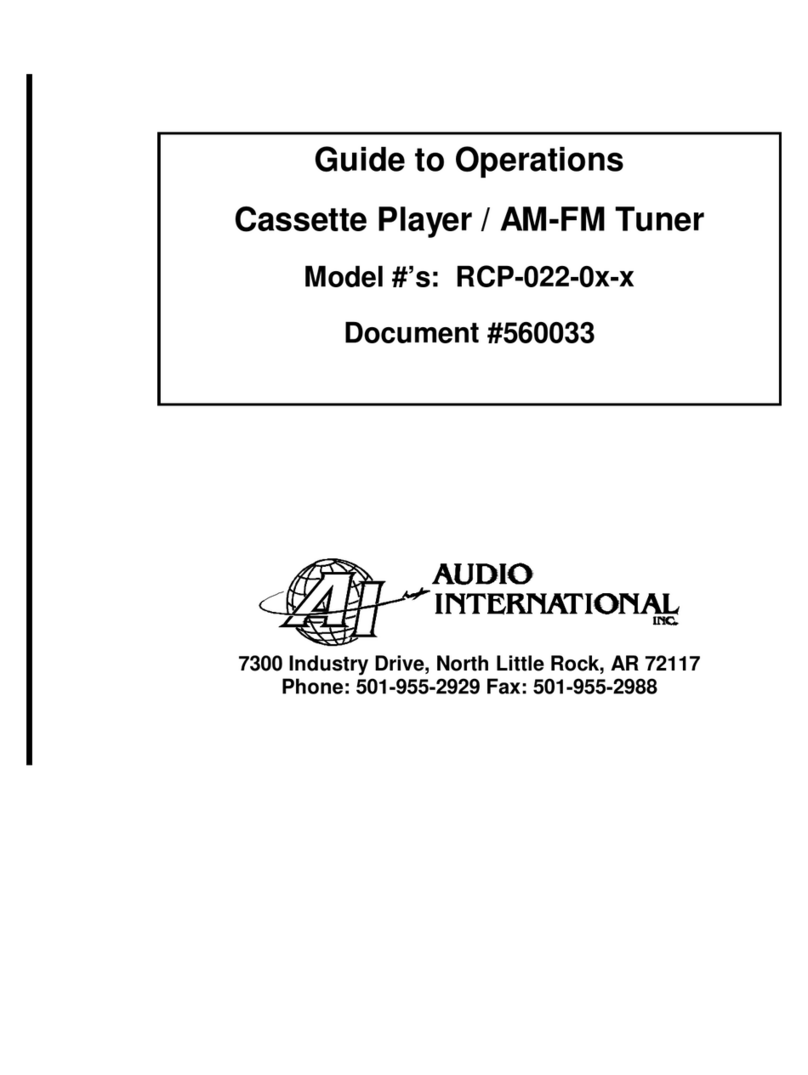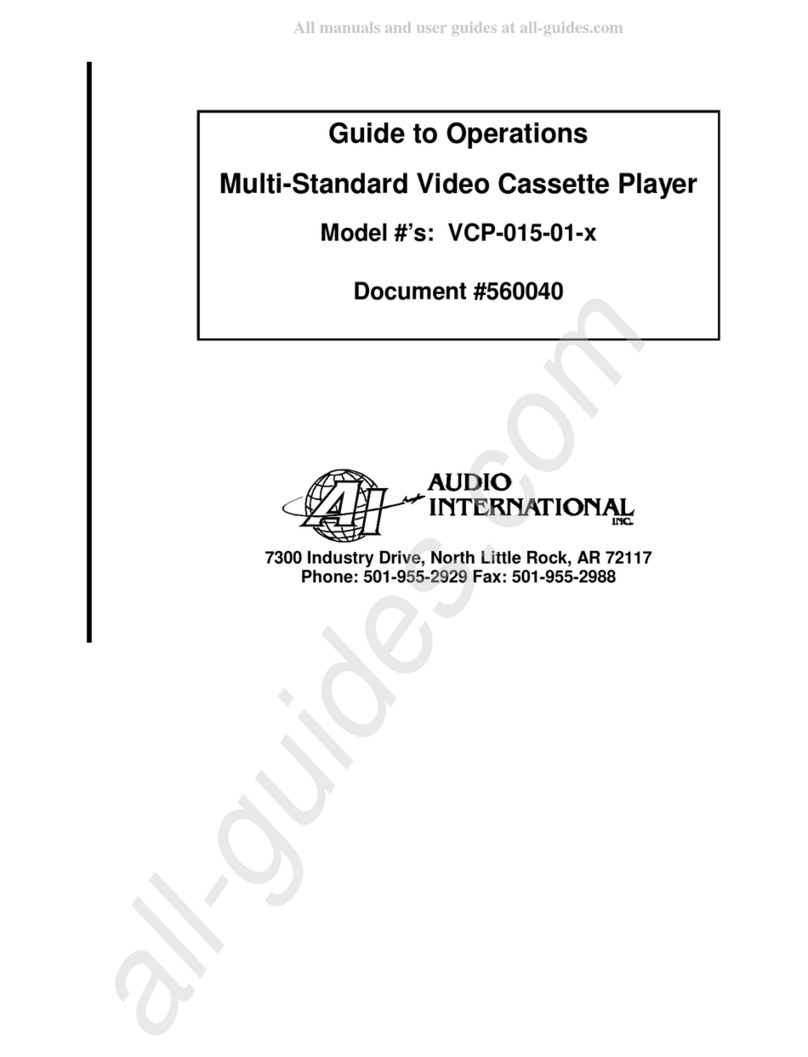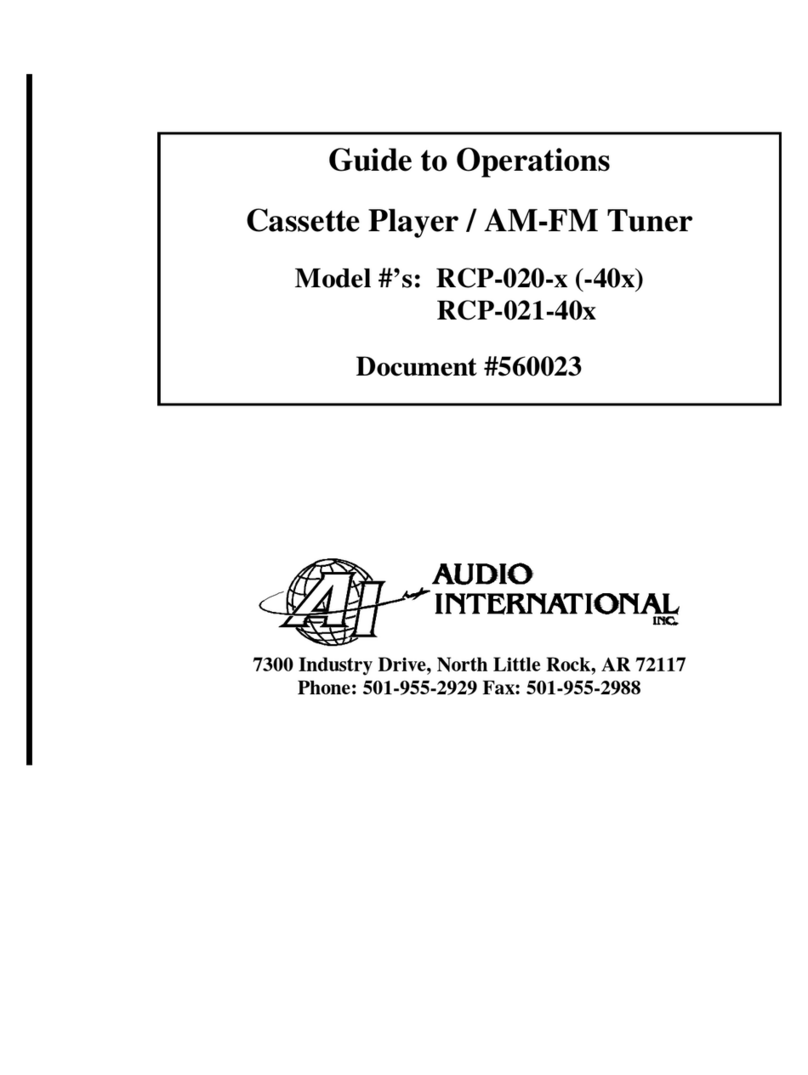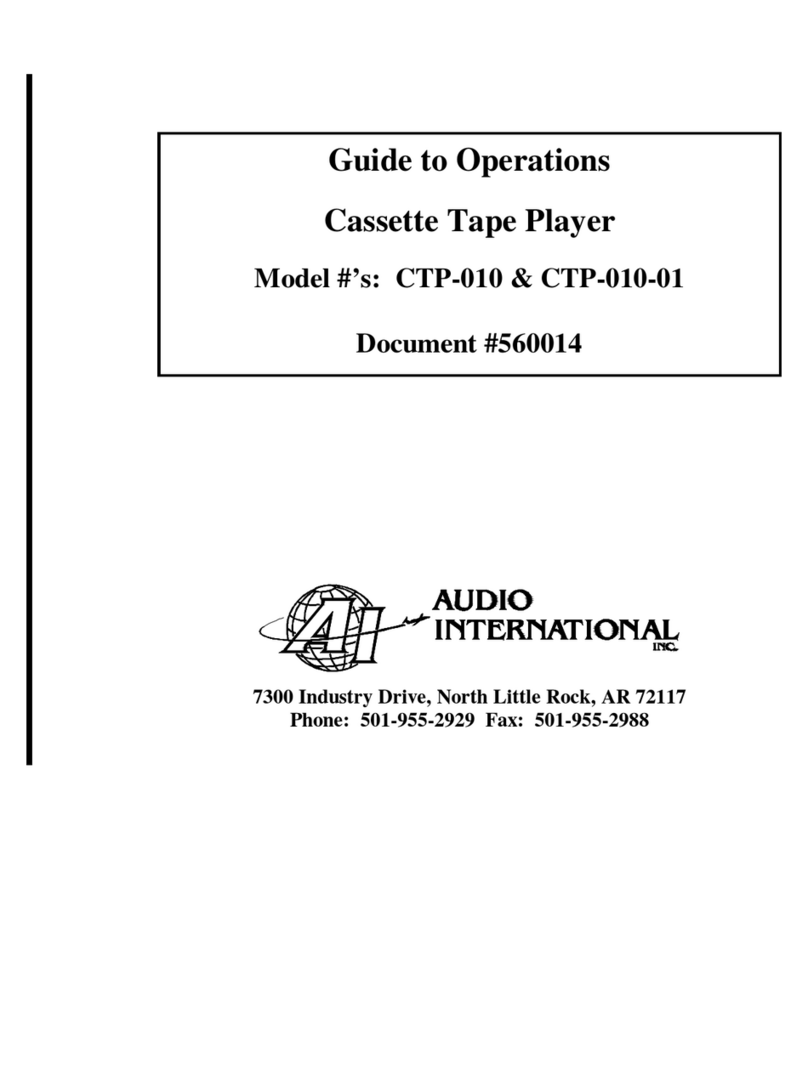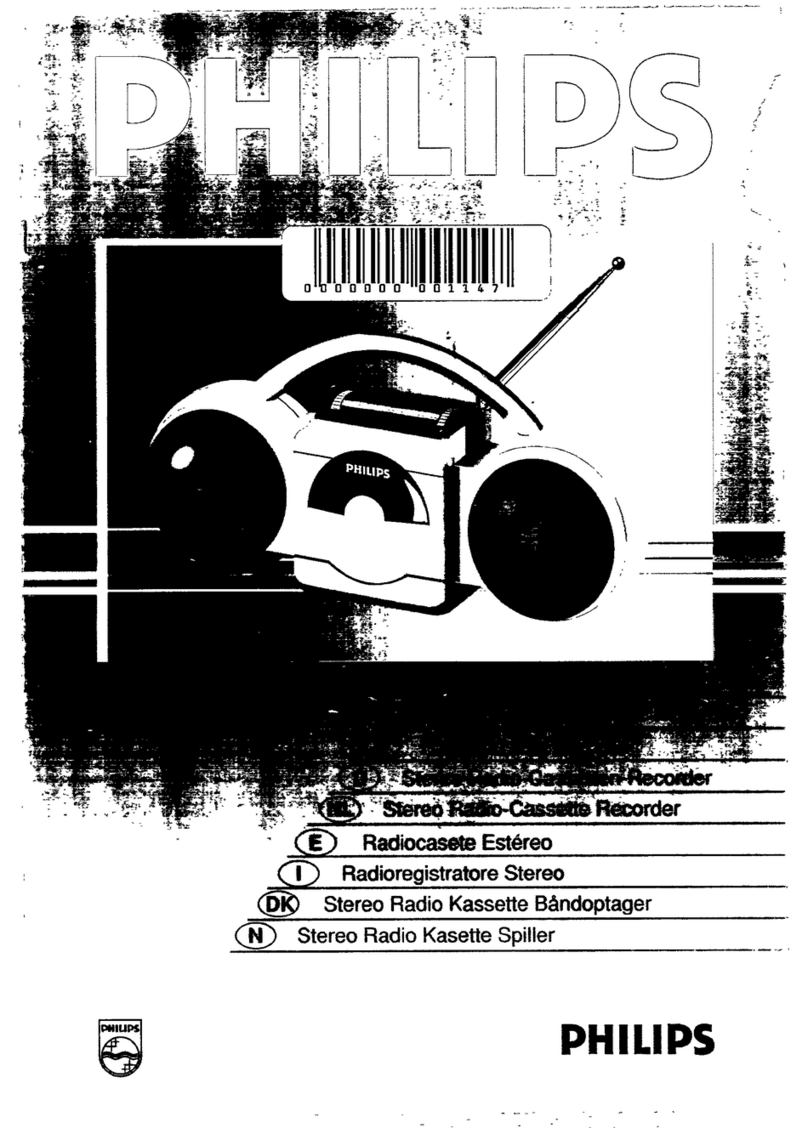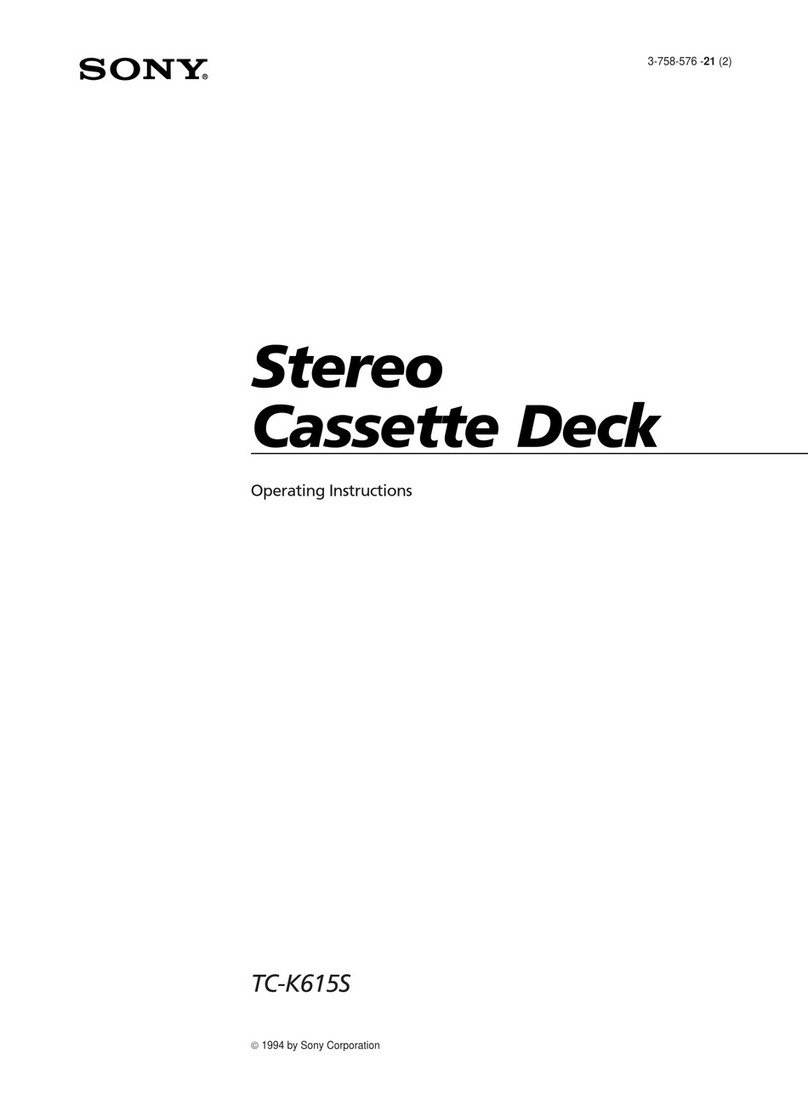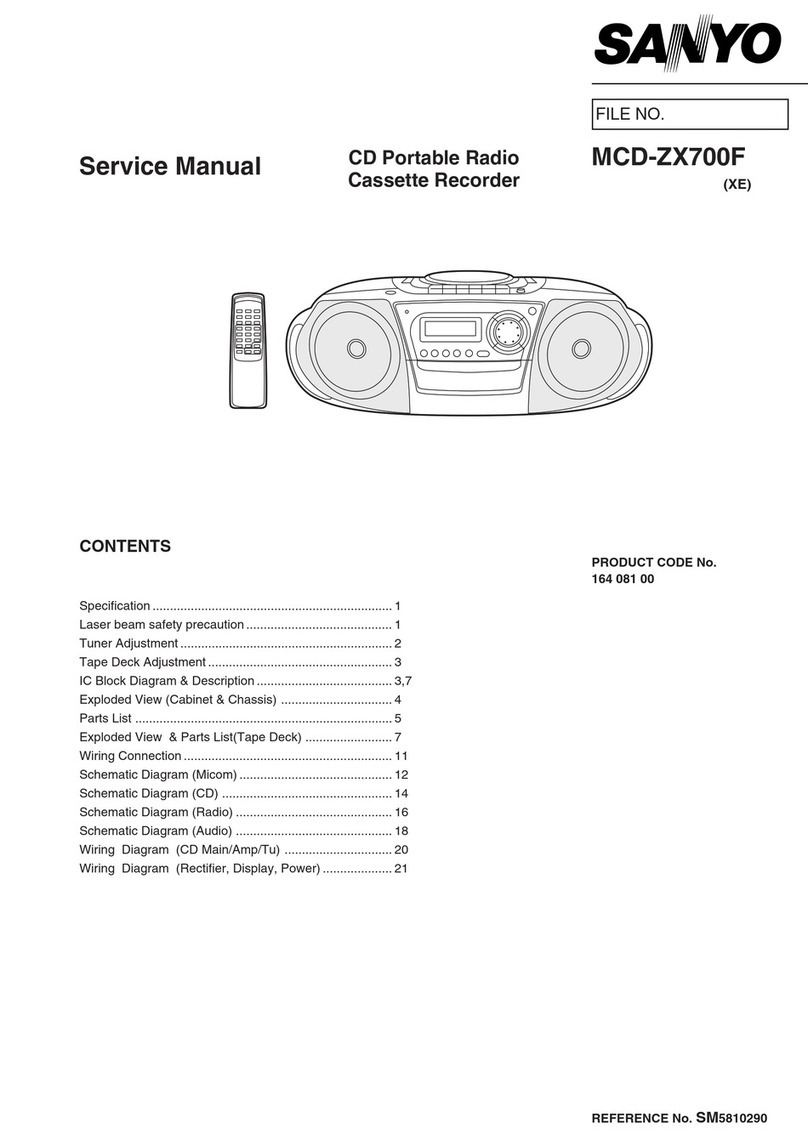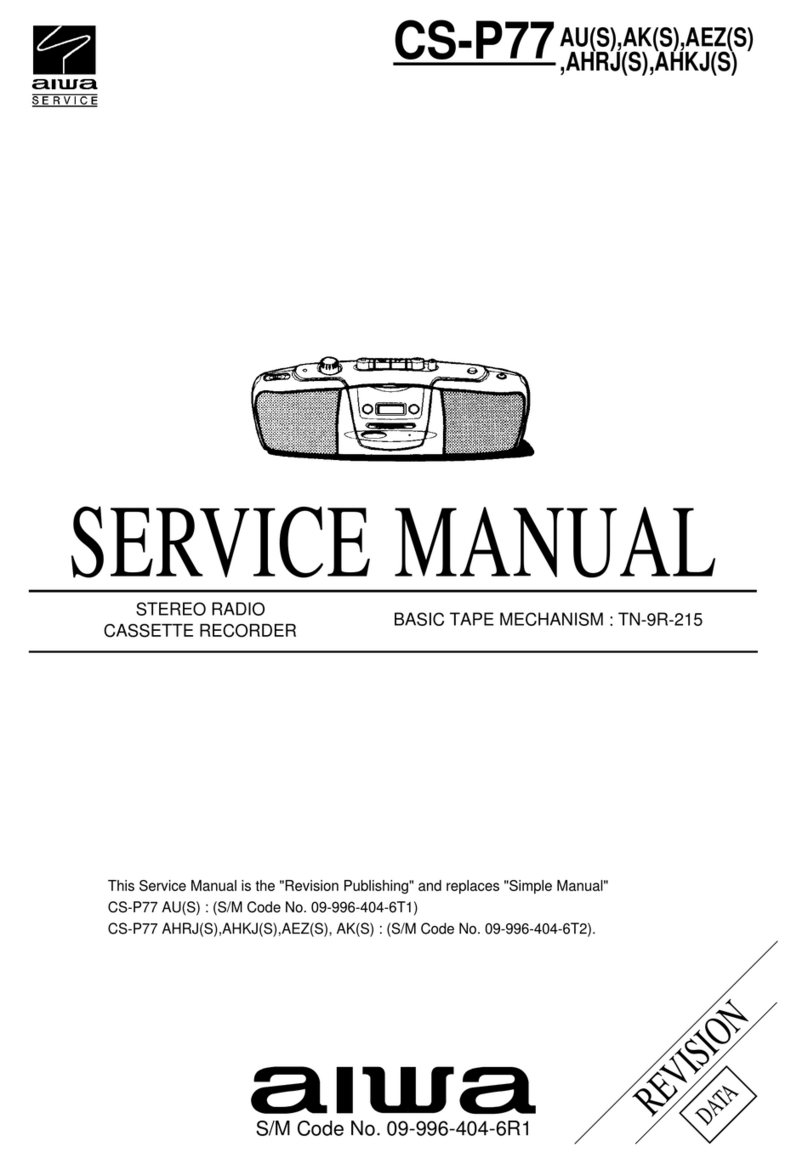
Audio International, Inc. CTP-201-01-x Installation & Operation Manual
Document # 540199, Rev B, 12/2004 Page 2 of 19
Table of Contents
Section Description Page
1.0 General Information. . . . . . . . . . . . . . . . . . . . . . . . . . . . . . . . 4
1.1 Introduction . . . . . . . . . . . . . . . . . . . . . . . . . . . . . . . . . . . . . . . 4
1.2 Purpose of the Equipment . . . . . . . . . . . . . . . . . . . . . . . . . . . . 4
1.3 Operational Features . . . . . . . . . . . . . . . . . . . . . . . . . . . . . . . . 4
1.4 Optional Equipment . . . . . . . . . . . . . . . . . . . . . . . . . . . . . . . . . 5
2.0 Application. . . . . . . . . . . . . . . . . . . . . . . . . . . . . . . . . . . . . . . . 5
2.1 Introduction. . . . . . . . . . . . . . . . . . . . . . . . . . . . . . . . . . . . . . . . 5
2.2 Typical Application . . . . . . . . . . . . . . . . . . . . . . . . . . . . . . . . . . 5
3.0 Installation . . . . . . . . . . . . . . . . . . . . . . . . . . . . . . . . . . . . . . . . 7
3.1 Preparation . . . . . . . . . . . . . . . . . . . . . . . . . . . . . . . . . . . . . . . . 7
3.2 Unpacking and Inspection . . . . . . . . . . . . . . . . . . . . . . . . . . . . 7
3.3 Cautions &Warnings . . . . . . . . . . . . . . . . . . . . . . . . . . . . . . . . 8
3.4 Wiring Requirements . . . . . . . . . . . . . . . . . . . . . . . . . . . . . . . . 9
3.5 Physical Characteristics . . . . . . . . . . . . . . . . . . . . . . . . . . . . . . 10
3.6 Electrical Characteristics . . . . . . . . . . . . . . . . . . . . . . . . . . . . . 11
3.7 Mating Connector Information . . . . . . . . . . . . . . . . . . . . . . . . . 11
3.8 Pinout Assignments and Descriptions . . . . . . . . . . . . . . . . . . . 12
3.9 Post Installation Test . . . . . . . . . . . . . . . . . . . . . . . . . . . . . . . . 12
4.0 Operation . . . . . . . . . . . . . . . . . . . . . . . . . . . . . . . . . . . . . . . . . 13
4.1 General Overview . . . . . . . . . . . . . . . . . . . . . . . . . . . . . . . . . . . 13
4.2 Front Panel Controls . . . . . . . . . . . . . . . . . . . . . . . . . . . . . . . . . 13
4.3 Front Panel Button Functionality . . . . . . . . . . . . . . . . . . . . . . . . 14
4.4 Cassette Tape Player Care . . . . . . . . . . . . . . . . . . . . . . . . . . . 15
4.5 Handling Cassette Tapes . . . . . . . . . . . . . . . . . . . . . . . . . . . . . 15
5.0 Troubleshooting. . . . . . . . . . . . . . . . . . . . . . . . . . . . . . . . . . . 16
5.1 General Troubleshooting Procedures . . . . . . . . . . . . . . . . . . . 16
5.2 Troubleshooting Chart . . . . . . . . . . . . . . . . . . . . . . . . . . . . . . . 17
5.3 Instructions for Continued Airworthiness . . . . . . . . . . . . . . . . . 17
6.0 Specifications . . . . . . . . . . . . . . . . . . . . . . . . . . . . . . . . . . . . . 17
7.0 Reference Drawings . . . . . . . . . . . . . . . . . . . . . . . . . . . . . . . . 18
